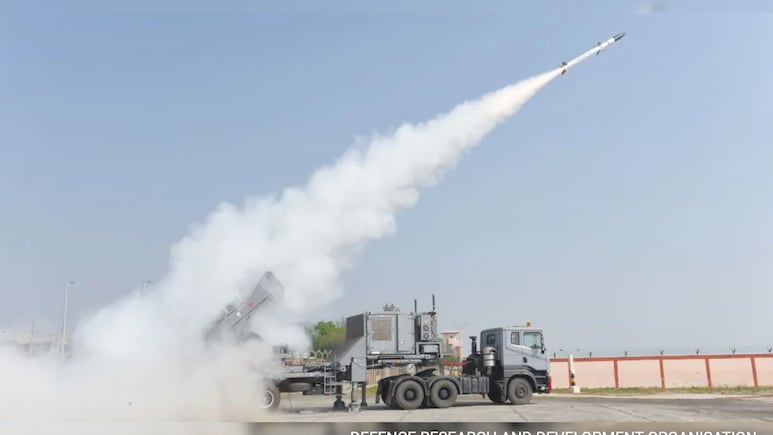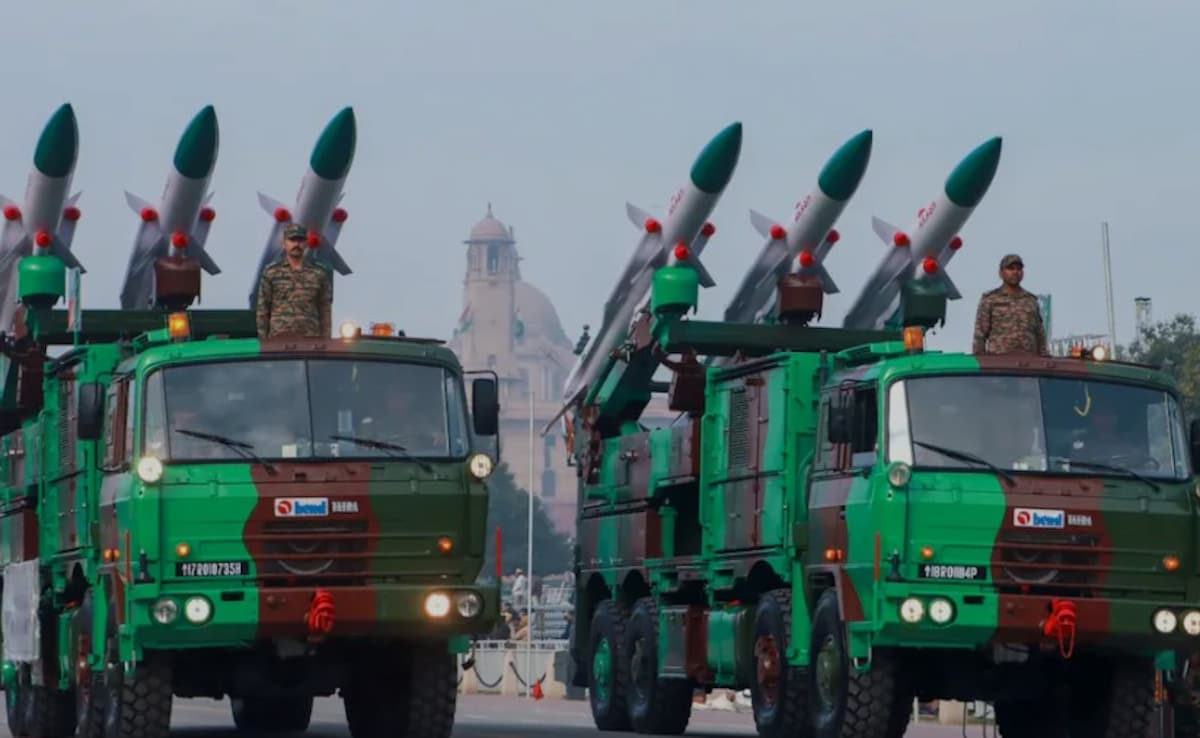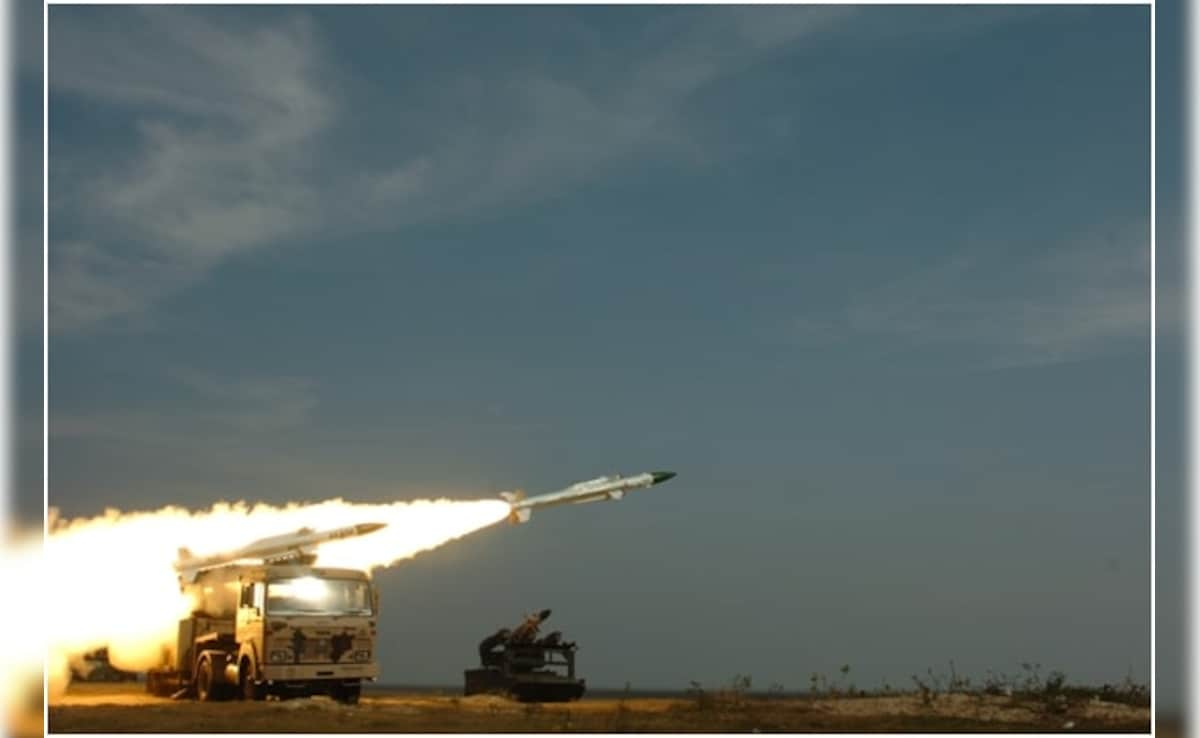
- India's defence production reached a record Rs 1,50,590 crore in 2024-25, an 18% growth
- Key reforms include Defence Acquisition Procedure and iDEX supporting innovation and indigenisation
- India aims for Rs 50,000 crore annual defence exports by 2029 through policy and manufacturing growth
India recently achieved a breakthrough in its defence manufacturing capabilities, registering a record-high production value of Rs 1,50,590 crore in 2024-25. This represents an 18% growth over the previous year's Rs 1.27 lakh crore and nearly 90% growth since 2019-20.
Defence Minister Rajnath Singh highlighted the Department of Defence Production and industry stakeholders for this landmark achievement. He emphasised that the growth signals a strengthening domestic defence industrial base, reflecting India's transition from an import-heavy defence economy to one that is self-sufficient, and oriented towards export.
But Why Does India's Defence Production Matters?
Rajnath Singh framed India's rising defence production as more than an economic milestone. Earlier in May, Singh said that true independence is incomplete without the ability to defend oneself.
"Defence Sovereignty means that until a country is capable and self-reliant in its defence needs, its independence cannot be considered complete. If we buy weapons and other defence equipment from abroad, we are outsourcing our security and leaving it at the mercy of someone else. Our government thought over it seriously and took a decisive step to achieve self-reliance. The expanding defence industrial ecosystem is providing an unprecedented strength to India," Singh said.
This philosophy, rooted in Prime Minister Narendra Modi's vision of 'Defence Sovereignty,' has driven a decade-long push to build a robust domestic defence industrial base. While addressing the nation on 79th Independence Day, PM Modi described strategic autonomy and indigenous capabilities as key to decisively tackling threats, making self-reliance the bedrock of national strength, dignity, and the journey to a developed India by 2047.
“Indigenous capabilities, including Made-in-India weapons, enable India to act decisively and independently, proving that national security cannot rely on foreign dependence,” PM Modi said.
Here's why this growth matters:
- Strategic Autonomy: Reduces dependence on foreign suppliers, especially during geopolitical tensions.
- National Security: Ensures faster, more secure access to critical defence systems.
- Global Presence: With global military spending touching $2.7 trillion, (according to the Stockholm International Peace Research Institute report 2024), India aims to establish a "Brand India" philosophy in global defence markets.
At the heart of this surge are key policy reforms, private sector integration, FDI liberalisation, and a focus on indigenisation of critical military systems. Here's a look.
Policy Reforms That Empowered Growth
India's defence sector transformation is rooted in a set of reforms and policy initiatives launched over the past years, aimed at reducing dependence on imports, encouraging private innovation, and easing procurement systems.
- DAP: Established in 2020 as a potential catalyst for Atmanirbhar Bharat Abhiyaan, Defence Acquisition Procedure (DAP) eases the procurement and acquisition of upgraded technology, products and services for the Tri-Services and other allied defence services.
- iDEX: The Innovation for Defence Excellence (iDEX) scheme, launched in May 2021 with Rs 498.78 crore, supports startups, MSMEs, and innovators to develop defence tech, with 300+ innovators being supported across 5 years.
- ADITI : ADITI Scheme, launched in 2024 under iDEX with Rs 750 crore outlay, aims to fast-track development of 30 critical deep-tech defence technologies by 2026. The scheme encourages collaboration between start-ups, MSMEs, and large industry players to reduce dependency on foreign Original Equipment Manufacturers (OEMs).
- SRIJAN Portal: Since its launch in 2020, over 38,000 imported items were identified for indigenisation, with 14,000+ already indigenised by February 2025.
- PILs: Through Positive Indigenisation Lists (PILs), the government has listed 5,500+ defence components that must be sourced domestically by a fixed timeline. As of February 2025, 3,000+ items have already been indigenised, including artillery guns, radars, assault rifles, corvettes, and light combat helicopters.
- DICs: Two Defence Industrial Corridors (DICs) were established in Uttar Pradesh and Tamil Nadu, fostering dedicated zones for defence production. As of February 2025, Rs 8,658 crore has already been invested and 253 MoUs have been signed with potential investments of Rs 53,439 crore.
- Eased Licensing and Exports: To facilitate faster growth, the government has simplified licensing for manufacturers, de-licensed components, introduced digital systems for faster export authorisations, resulting in 1,500+ approvals in 2024-25.
- FDI Liberalisation: In a significant move to globalise India's defence sector, Foreign Direct Investment in the defence sector was liberalised in September 2020 to attract foreign investment, allowing up to 74% FDI through the automatic route and above 74% through the government route. Since April 2000, the total FDI in defence industries stands at Rs 5,516.16 crore.

Strengthening Private Sector's Role
Dominated by public sector undertakings (DPSUs), India's defence sector has seen a surge in private sector contribution. In May 2001, the Defence Industry sector was opened up to 100% for Indian private sector participation through licensing. In 2024-25, private companies contributed Rs 15,233 crore to exports. The annual turnover as reported by companies operating in Defence and Aerospace sectors in the private sector for the year 2018-19 is approximately Rs 15,000 crores
Record Defence Contracts
In 2024-25, the Ministry of Defence signed a record 193 contracts valued at Rs 2,09,050 crore, 81% of which (Rs 1,68,922 crore) went to Indian companies. The key procurements included:
- 156 Light Combat Helicopters (LCH) Prachand worth Rs 62,700 crore (65% indigenous; 250 Indian companies involved).
- 307 ATAGS artillery guns and 327 towing vehicles for Rs 7,000 crore, developed by DRDO, Bharat Forge, and Tata Advanced Systems.
- Wet lease of KC-135 refuelling aircraft to strengthen aerial reach and pilot training.
Defence Exports Surge To All-Time High
India's defence exports in 2024-25 reached Rs 23,622 crore ($2.76 billion), a 12.04% increase over the previous year and nearly 15 times growth compared to 2016. Exports included:
- Bulletproof jackets
- Dornier Do-228 aircraft
- Chetak helicopters
- Interceptor boats
- Lightweight torpedoes
- 'Made in Bihar' combat boots for the Russian Army
DPSUs saw a 42.85% increase in exports, contributing Rs 8,389 crore, while the private sector contributed Rs 15,233 crore. Export authorisations rose by 16.92%, and the number of exporters grew by 17.4%. India has now exported defence items to around 80 countries, solidifying its position as a trusted global defence partner. India's defence exports touched a record Rs 23,622 crore ($2.76 billion) in 2024-25, a 12% increase over the previous year and nearly 15x growth since 2016.
Proving Capability: Operation Sindoor
In a major testimony of India's indigenised defence capabilities, Operation Sindoor in May 2025 showcased the performance of homegrown systems. In May 2025, during Operation SINDOOR, India used homegrown defence systems. India's air defence systems, including Akash, OSA-AK, and LLAD guns, neutralised Pakistani drone and missile threats across key locations.

On The Road To Rs 50,000 Crore Defence Exports
India's defence sector has made major progress in recent years. The record production of Rs 1,50,590 crore in 2024-25 is a strong sign that the country is building more of its own defence equipment instead of relying on imports.
Looking ahead, the government is keeping up the momentum. For 2025-26, it has set aside Rs 6,81,210.27 crore for the Ministry of Defence, the biggest share among all ministries. Of this, 75% of the modernisation budget (Rs 1,11,544 crore) will go toward buying from Indian companies.
With new policies and initiatives, and expanding manufacturing, India is positioning itself as a top defence exporter, with a goal of Rs 50,000 crore in annual exports by 2029.
Track Latest News Live on NDTV.com and get news updates from India and around the world

